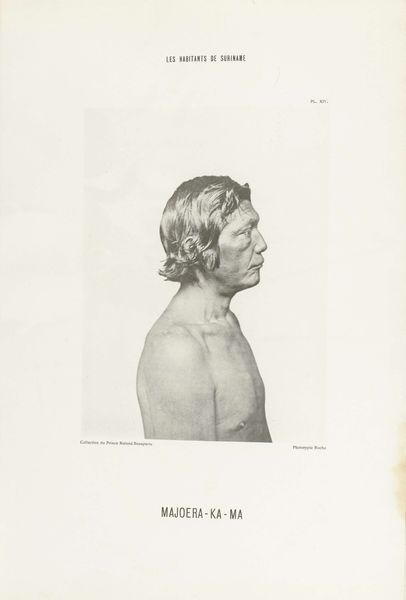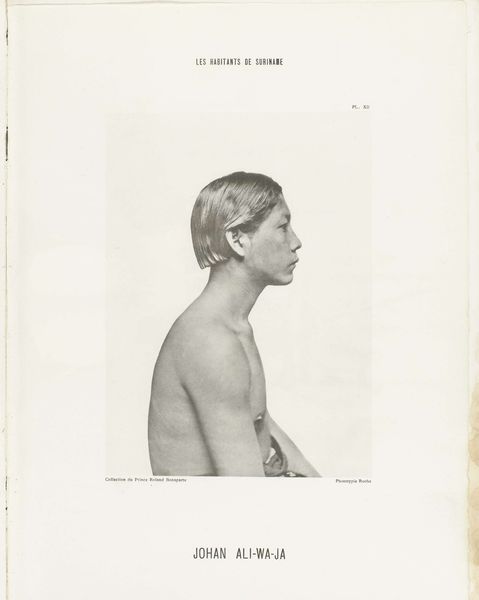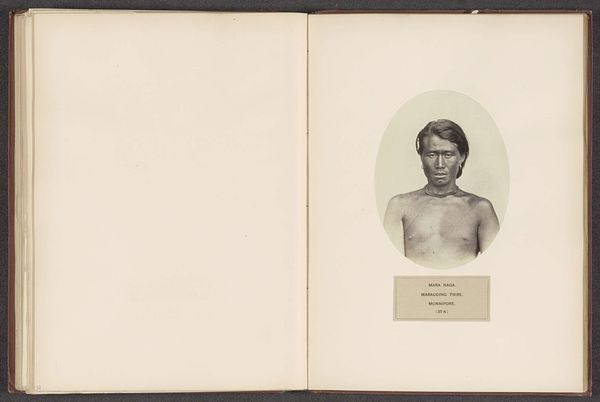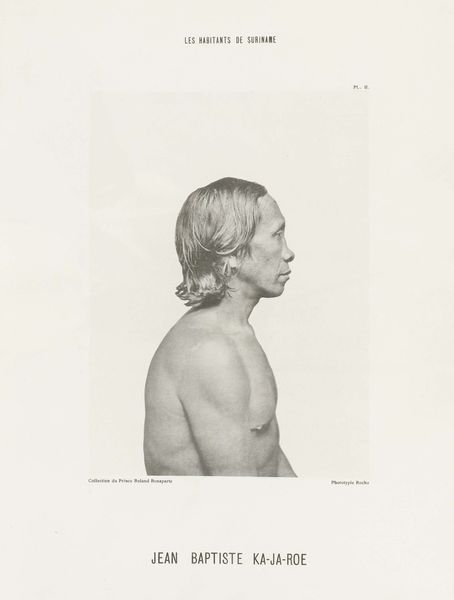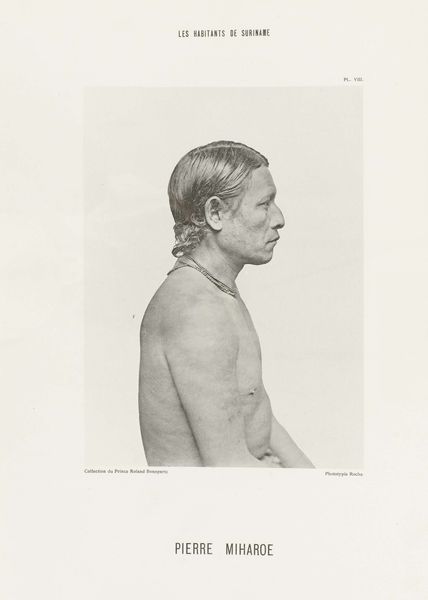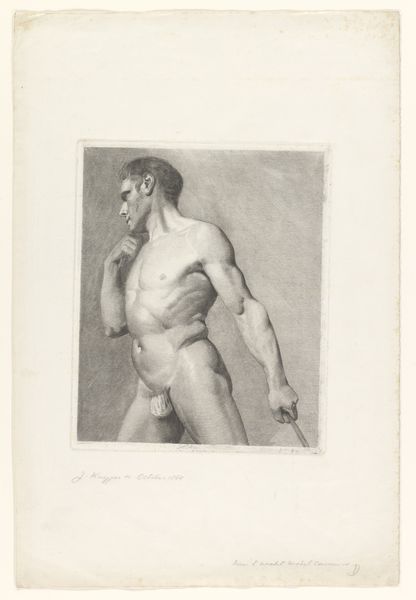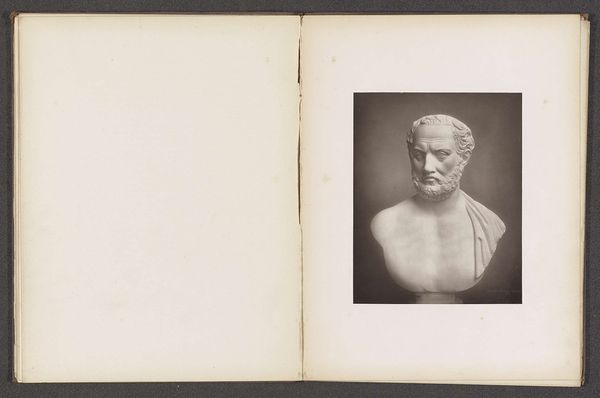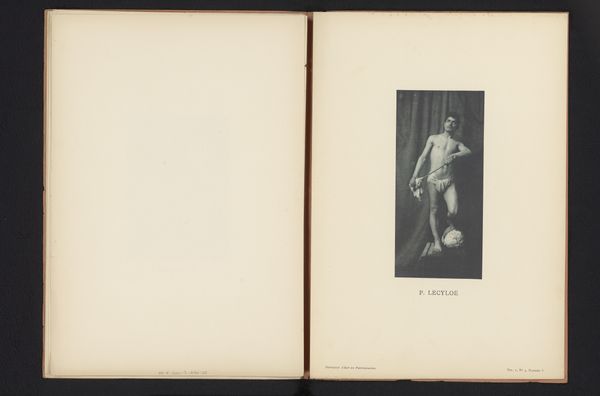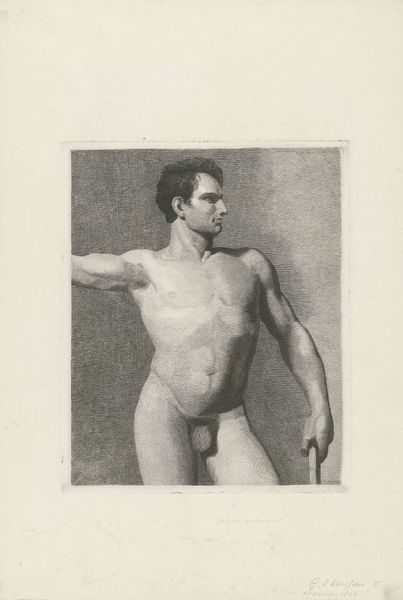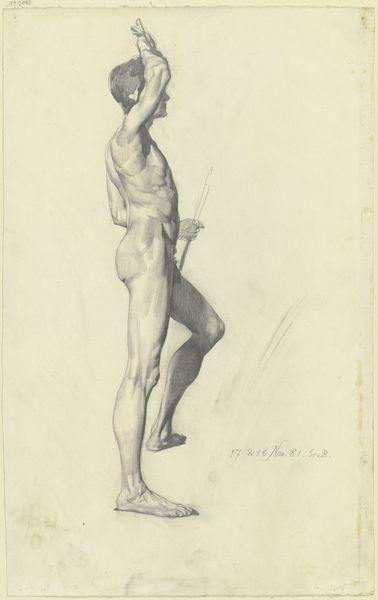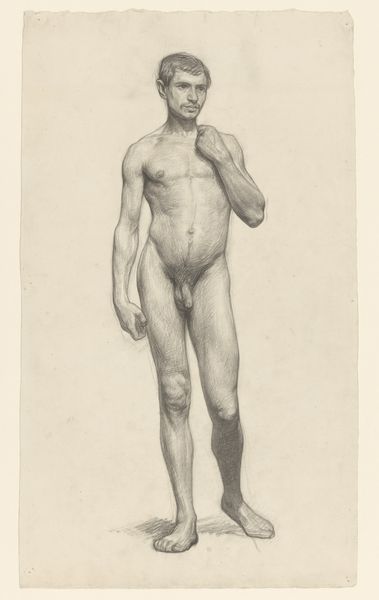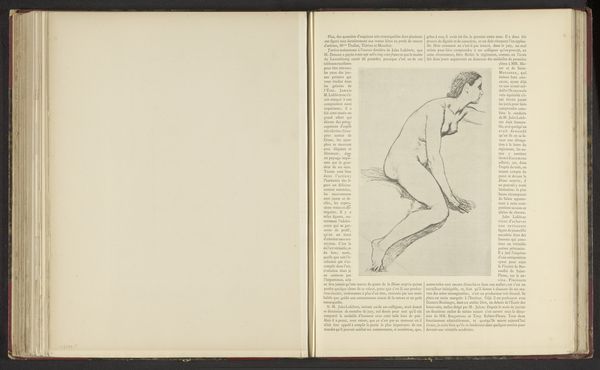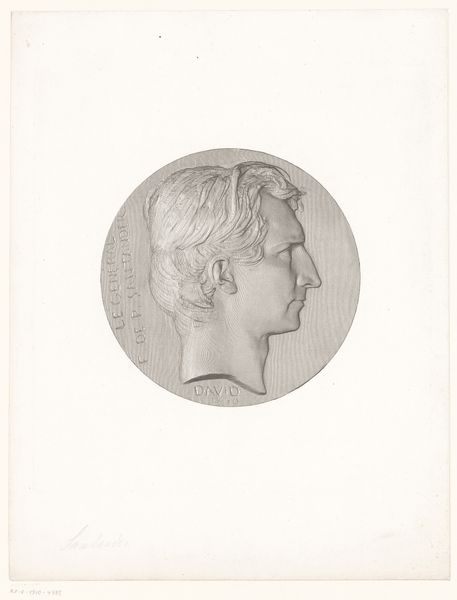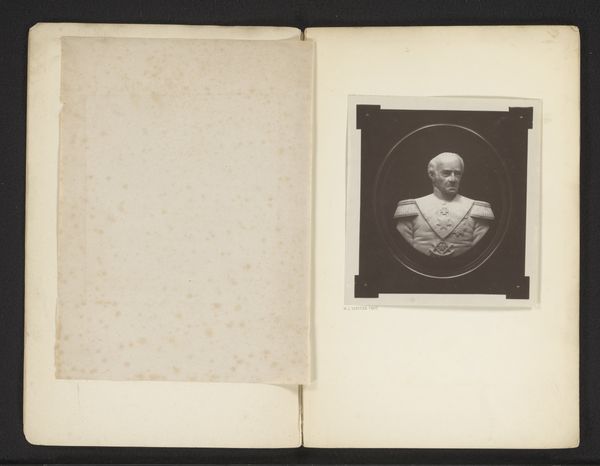
photography, gelatin-silver-print
#
portrait
#
african-art
#
photography
#
historical photography
#
gelatin-silver-print
#
nude
Dimensions: height 237 mm, width 174 mm
Copyright: Rijks Museum: Open Domain
Curator: Friedrich Carel Hisgen created "Portret van Johan Hi-A-Lé" between 1883 and 1884. It’s a gelatin-silver print. My immediate response is that it feels very stark and clinical, almost anthropological. Editor: It's fascinating how the photographic process, especially at this time, becomes a tool of documentation and, arguably, categorization. You immediately pick up on this mood as this work brings forth a crucial discussion around how identity and the representation of indigenous bodies intertwine within the colonial gaze. What can this portrait tell us about Johan Hi-A-Lé within that context? Curator: Well, focusing on the material aspect, gelatin-silver prints like these allowed for a high level of detail and reproducibility, ideal for scientific studies and record-keeping. Hisgen was capturing a specific type, or so he thought, but Johan is named in the title so perhaps this transcends easy stereotyping. It brings up questions about the division of labor inherent in producing this portrait. Who controlled the means of representation? How might Johan have felt about this image being circulated? Editor: Exactly. And this is where considering intersectionality is paramount. This portrait of Johan exists because of various layers of power. The photographer held the power to create the image; the colonizer had the power to commission and circulate it, but we also must consider the labor of producing gelatin silver print at this period. Who was behind it? Was it industrialized, or a handicraft? In the colonial era, did colonized people have a place to tell their own stories and define their identities? It's almost confrontational in how it strips away the typical adornments we might associate with portraiture. There’s no background, only neutral tones, suggesting something “objective” but of course photography, even then, was rarely unbiased. Curator: The lack of context highlights how Johan Hi-A-Lé is presented as a specimen of humanity but simultaneously with great dignity. He's looking away from us, almost denying us full access, it is quite compelling. Knowing it was intended as part of a colonial record of Surinamese inhabitants complicates any simple interpretation. His gaze seems to challenge our reading. Editor: By focusing on materials, labor, and production, we unveil the inherent power dynamics at play. Thinking about Johan Hi-A-Lé's presence and the history behind this photograph reminds us to question visual narratives and understand their influence within broader societal conversations around otherness, colonialism, and identity formation. Curator: Indeed, I see this prompts us to examine our own roles as viewers, confronting our inherited preconceptions.
Comments
No comments
Be the first to comment and join the conversation on the ultimate creative platform.
